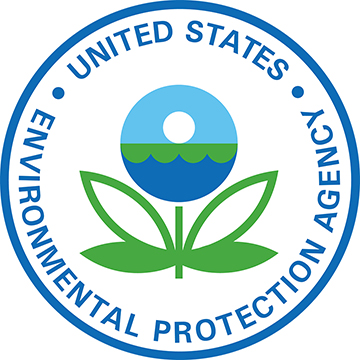Newswise — EPA researchers have been evaluating different types of aerosol treatment technologies that could potentially be used to reduce the amount of virus (or other pathogens) in the air in occupied spaces, for example in an office or school.
Increasing ventilation and upgrading air filtration, as well as wearing well-fitting masks, are all effective ways to reduce the concentration of virus in the air that we breathe. However, there are certain situations where these strategies and social distancing can be difficult to implement, so there has been increasing interest in technologies that can inactivate pathogens in the air, rather than remove them from the airstream by circulation through a filter (physical trapping) or by diluting the air (for example, through increased ventilation).
Many of these technologies are new and have not been well studied. The testing that has been conducted is often commissioned by the technology vendors themselves and carried out in very small laboratory spaces, which makes it difficult to extrapolate results in real-world settings.
Because there is no standard test method to assess the effectiveness of these types of air treatment technologies, differences in how the testing is conducted also makes it difficult to compare results from different lab studies and across technology types.
EPA researchers evaluated the technologies using a standardized testing approach in a large, controlled test space with a recirculating HVAC system so that the capabilities of different types of technologies can be compared and translated to real-world settings.
The researchers studied five technologies: an antimicrobial air treatment, a multi-stage air filtration and purification system, bipolar ionization devices, photocatalytic devices, and electrostatic filters.
To test the technologies, researchers used a surrogate virus that is smaller and more challenging to inactivate than SARS-CoV-2, the virus that causes COVID-19.
Based on the results from the studies, the researchers found that the antimicrobial air treatment and the multi-stage air filtration and purification system were best at inactivating virus in real-world settings.
Grignard Pure Anti-microbial Air Treatment
Grignard Pure is an antimicrobial air treatment product that currently holds an EPA Section 18 Emergency Exemption for use in certain indoor spaces in some states. EPA researchers conducted two different types of tests with the product.
The first type of test introduced the product into the controlled test space with a high concentration of virus already present, which allowed researchers to assess how well the product worked to reduce virus concentrations over time.
In the second test, the target concentration of Grignard Pure was established in the controlled test space before the virus was introduced, which more directly assessed how well the product might work in occupied spaces where infected people would be entering where the target concentration of the product is maintained. Compared to control conditions that account for natural decay of the virus without the product present, the amount of virus was reduced by more than 90 percent to approximately 99.9 percent, depending on the test conditions, making this treatment effective in deactivating the virus.
Knorr Brake Company 3-Stage Air Filtration and Purification System
The Knorr Brake Company developed a 3-Stage Air Filtration and Purification System designed to be installed in public transit vehicles. The system contains an actively charged electrostatic filter, a UV-C light, and a bipolar ionization component.
EPA researchers tested different combinations of these components, and two different types of control conditions: the first having the physical arrest filters from the electrostatic filter in place (but not actively charged), and the second with these filters removed. Except for the test with the bipolar component alone (which was not as effective), the other combinations of the system components tested were similarly effective. Compared to the control tests with no filter present, the amount of virus in the air was reduced by about 90 percent to greater than 99.5 percent. The arrest filter alone, even when not actively charged, removed up to 90 percent of virus particles from the air.
The results of this research show that it is important to consider the basis for the numbers that go into the calculation of how well a technology works to reduce the amount of airborne virus.
For example, EPA researcher Katherine Ratliff says, “In looking at data on a particular product or device, do these calculations take the natural decay of a virus into account, which would be occurring even if the technology weren’t active? If not, then how well it works is likely to be overstated.”
She adds, “It is also important to understand how the tests were conducted – were they conducted in a large space, similar in size to where the technology would be deployed, or in a really small lab chamber, where air is recirculated and exposed to the technology at a much higher rate than it would be in real life? That would also overstate how effective the technology would be in real-world conditions. Our research also shows that all these testing considerations, including how control conditions are designed, can have a significant impact on calculated efficacy.”
The research conducted here was focused on evaluating how well these technologies work to reduce the concentration of airborne pathogens, rather than investigating the potential health impacts of prolonged human exposure to the technologies themselves and to potential byproducts. The safety level of these emerging technologies, particularly for sensitive populations, is not fully understood, and more research is needed to evaluate potential long-term exposure impacts.
To see more of the results from these studies, including results from the bipolar and photocatalytic devices, please visit: https://www.epa.gov/covid19-research/aerosol-treatment-technology-evaluation
To learn more about EPA’s Covid-19 Research, please visit: https://www.epa.gov/covid19-research

